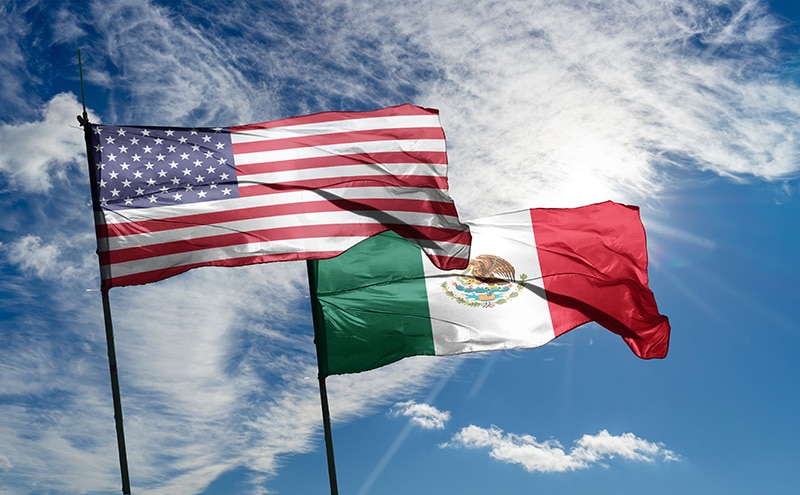

Want a Free Supply Chain Analysis?
Carriers in the trucking industry are still adjusting to the growing pains of the federally mandated electronic logging devices (ELDs) following implementation deadlines earlier this year. For many carriers, even with deadlines in the rearview mirror, there is still confusion around the details of the mandate. Even those who are fully intent on cooperating may not be confident that they are in full compliance, or which specific aspects of their operations even need to be in compliance.
The fines, which went into effect in April, state that under Title 49, section 521, any driver or carrier who does not keep a Record of Duty Status (RODS) is subject to being pulled off the road and face a civil penalty of $1,000 to $10,000 for each offense. Even still, one-third of U.S. truck drivers still use paper logs to track hours of service, despite the federal mandate, says a new survey with 2,400 respondents from software-as-a-service (SaaS) company Teletrac Navman that provides GPS fleet tracking.
But contrary to popular belief, fines are regularly being issued to carriers.
While there has been an industry narrative developing since news of the mandate emerged that the potential to face fines is more of a “boogeyman” scare-tactic than a real concern, the evidence tells a different story. But contrary to popular belief, fines are regularly being issued to carriers. Almost $32 million worth of fines had been racked up as of Feb. 28 and another $142 million as of Aug. 22, totaling at $174 million.
BlueGrace’s Brian Blalock, Senior Manager of Sourcing Strategy, and Raddy Velkov, Director of Trucking Operations, explain these fines’ effect on the nation’s trucking capacity, the lanes that are the most affected, and how to use mode optimization to respond to the situation in their webinar,“Response to the ELD Mandate”.
Blalock says that with trucks being taken off the road, shippers are experiencing a constriction of capacity, “which means things are becoming more and more difficult for us as shippers to be able to create good business plans, make good decisions and make sure our freight arrives on time and in full.”
First, Blalock lays down how the ELD mandate affects different routes, i.e. local, short haul, tweener, and long haul.
What Does the ELD Mandate Mean: Transit times, Capacity, and Rates
Local (less than 100 miles): Runs that are under 100 air miles are considered not subject to the ELD mandate, so the segment of small carriers that operate entirely on a regional basis have been unaffected.
Short Haul (100-450 miles) “As the mileage grows… there is more of an adjustment period due to the longer length of haul.” But if you drive beyond the 100-mile radius or take more than 12 hours to return to your home base, you are required to maintain a RODS.
Tweener (450 – 800 miles) This category is the most affected by the ELD mandate, Blalock and Velkov explain. Smaller carriers that were running one- and two-day points illegally were able to charge shippers less because they were recording use of the equipment for one day, whereas the larger size carriers who were in compliance had to pay the true, higher amount.
Once you’re inspected and ticketed by the DOT you are more likely to get ticketed or inspected again.
“Larger carriers… were compliant to run these two-day points,” Velkov explained. “Some of these larger carriers were already compliant for a lot of years, just due to the sheer size of their fleet.” Velkov added, “Once you’re inspected and ticketed by the DOT you are more likely to get ticketed or inspected again, so the carriers with larger fleets were getting inspected more than the owner-ops. with one or two trucks, so they wanted to adjust the playing field in this market space and be price competitive.”
Long Haul (over 800 miles) The long haul runs are also affected by the ELD mandate, of course, but many carriers operating these runs were already in compliance.
With the ELD-mandate changing business dynamics many carriers have made it their goal to minimize cost in order to reduce rates to stay competitive, but that’s only one piece of the puzzle.
Analysis with BlueGrace
If all of the conversations you’re having internally are about rates, you’re having the wrong conversation.
“If all of the conversations you’re having internally are about rates, you’re having the wrong conversation,” Blalock said, “because more of the cost can be driven out by better decisions than by any decisions that can be made to rates.” Velkov and Blalock explain how businesses can use data to optimize their business models, using the metrics and analysis available with Bluegrace’s services. The process starts by looking at a full picture of the supply chain to understand the network and cost distribution.
Shippers should internally ask questions like, which vendors are costing more money than they’re worth? Can I negotiate better dollar per pound rate with them? Are we losing money with this a specific vendor? Once you have a strong understanding of your current network and the costs associated with your vendors, you can begin to dig deeper by looking at various analysis offered by BlueGrace, such as the ship weight analysis, explained below.
Ship Weight Analysis Report: This measure allows shippers to look at month-to-month based on average weights cost per pound per month to determine if there are any outliers. For instance, were there any particular times your company did better than others?
There is a tendency to steer away from FTL because of cost, to shift to multiple LTLs, but this may not always be the best option.
“You’re not always looking for mistakes, but instances in which things were done considerably better,” Blalock commented. You want to understand the exact cost per unit, or as Blalock says, the cost to put each widget on the shelf. This will help you make smarter business decisions, for instance, whether or not to book full truckload (FTL) or less-than-truckload (LTL.) “There is a tendency to steer away from FTL because of cost, to shift to multiple LTLs, but this may not always be the best option,” Blalock said. You may be making the mistake of booking LTL thinking it is saving you excess cost, but if sixteen LTL booking costs you $200 each, versus paying for one $1000 FTL, you’ve just paid in excess of $2,200.
How BlueGrace Can Help
With the ELD-mandate in effect and a capacity crunch in full swing, there is an industry-wide pressure to curb costs, but there is no reason to fold under the pressure. There are plenty of opportunities to save on costs waiting to be revealed. All it takes is a hard look at your business model. To speak to one of our freight experts, call us at 800.MYSHIPPING or fill out the form here.


